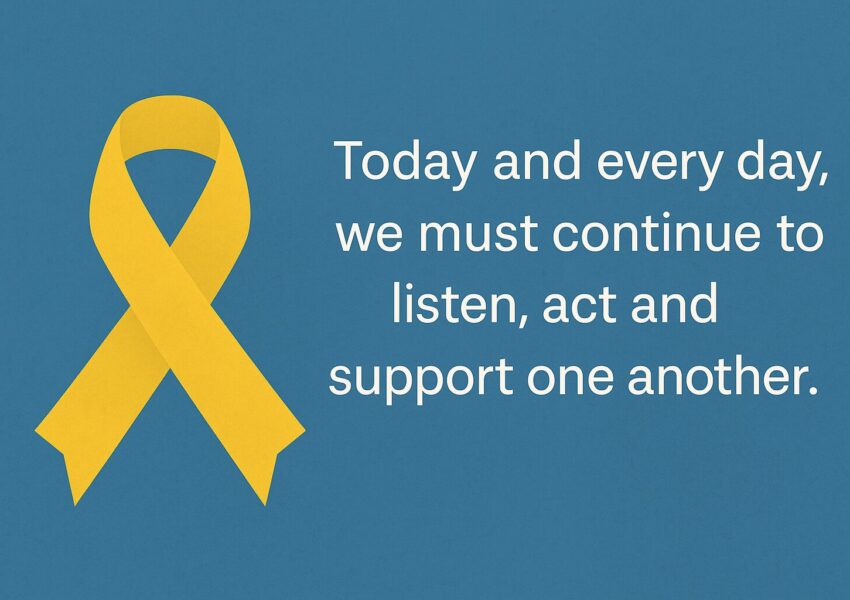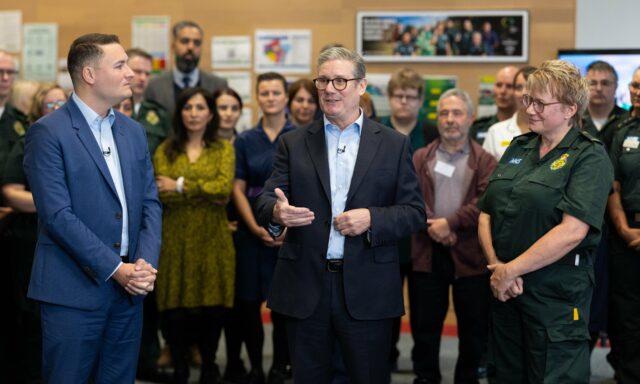
Behind every suicide is a life that mattered, and a system that might have responded better. On World Suicide Prevention Day, Thalamos asks what more we can do.
Each year, World Suicide Prevention Day invites us to confront a difficult truth: far too many people still die in crisis, even after contact with health and care services and the vitally important role family, friends or colleagues play in early intervention. It is a day of remembrance, but also a day to reflect on what more can be done, across systems and professions, to support people before risk becomes tragedy.
For those working in mental health crisis care, this reflection is often a daily one. Suicide prevention is not confined to specialist services. It is woven into the fabric of every assessment, every decision, every moment of delay or escalation.
When systems are slow, risk does not wait
In 2023, 6,069 people died by suicide across the England and Wales, the highest number since 1999. Three-quarters of those deaths were male. The suicide rate among women was also the highest since 1994.
Source: Suicides in England and Wales: 2023 registrations
Behind those statistics are individual stories, many involving people who had recently sought help. According to the National Confidential Inquiry into Suicide and Safety in Mental Health (NCISH), around one in four people who die by suicide in the UK had been in contact with mental health services in the 12 months before their death.
Source: NCISH Annual Report 2025
Among those recently discharged from psychiatric hospital, the risk is particularly acute. The same NCISH report also revealed that, in 2022 alone, 198 people died by suicide within three months of leaving inpatient care, and the single most common day for suicide was day three post-discharge.
These deaths are not abstract. They are the result of cumulative pressure points in the system, gaps between need and response where risk continues to escalate even after someone asks for help.
The missed moment
In May 2025, a coroner issued a Prevention of Future Deaths report following the death of 66 year-old Julie Beasley. She had contacted NHS mental health services eight times in a single month, expressing suicidal thoughts and requesting a medication review. But her urgent assessment did not happen, her risk was not formally reassessed, and her repeated attempts to disclose vital information were overlooked. She died by suicide days later. While the report focused on the lack of a risk assessment, it’s also important to acknowledge that a single, static, point in time assessment has been found to be ineffective at determining the likelihood for an individual to become a risk to themselves or others. Led by individuals such as Philip Pirie, a bereaved father who campaigned to improve how the NHS manages risk, progress is being made, and new guidance has set out a replacement approach. It’s one that puts safety assessment, formulation, management and planning in the context of relational, therapeutic engagement — which is known to improve outcomes.
Source: Julie Beasley: Prevention of Future Deaths Report
Julie’s case is not isolated. In 2023, a 12 year-old girl named Allison Aules took her own life after waiting nine months for an initial CAMHS appointment. She had been referred for self-harm and low mood but was discharged without being seen in person due to backlog-clearing pressures. The coroner warned the case was not unique: “This is happening across the country.”
Source: Allison Aules: Prevention of future deaths report
These stories underline the cost of system-wide delays. When a person in crisis reaches out, time is more than a resource. It is a safeguard. And when help does not arrive, risk does not wait.
The invisible escalation
We are sometimes guilty of thinking of suicide as something that can be predicted, but the data tells a different story. At their final contact with services, 81% of people who later died by suicide had been assessed as low or no immediate risk.
Source: NCISH Annual Report 2025
That figure highlights a painful reality. A lot of people who die by suicide do not trigger red flags. This means the moments that matter most are often the ones that feel routine: follow-ups, handovers, discharge plans, risk summaries. These are not just administrative steps. They are opportunities to intervene.
And yet, follow-up care still falls short. Despite a national target to follow up 80% of discharged psychiatric patients within 72 hours, the current figure, revealed by Nuffield Trust, stands at just 60.4% in England.
Source: Nuffield Trust QualityWatch, Aug 2024
That is more than 1,800 people per month who leave hospital after a mental health crisis and are not contacted within the safest timeframe. It is during these transitions — from ward to community, from crisis to recovery — that suicide risk is often at its highest.
A shared responsibility
Suicide prevention is not the job of a single profession or policy. It is a shared responsibility. It lives in how we design services, how we follow up after missed appointments, how we prioritise safe transitions of care, not just emergency interventions.
Everyone working in and around crisis care knows the weight of this responsibility. Many have had patients they remember vividly, and statistics show that more so than not will have a family member, friend or colleague that they have lost to suicide as well. Moments where a quicker response, a more joined-up system, or a different decision might have made a difference.
Looking ahead
The recent rise in UK suicides should act as a national wake-up call. The numbers are going in the wrong direction. More importantly, the stories behind those numbers are speaking to us clearly.
As policy conversations around Mental Health Act reform continue, and as new suicide prevention strategies roll out across the UK, we have an opportunity to think differently about risk. Not just as something to be scored, but as something to be mitigated through relational care, timely access, and system accountability. The new NHSE guidance shows how new ways of thinking about existing processes can improve patient safety, but it needs to be widely adopted and the change embraced.
On this World Suicide Prevention Day, we think about those that have been lost. We acknowledge those who continue to live with risk. And we thank those working across health, social care and policing who strive every day to create moments of intervention, connection and care.
The question we ask ourselves is simple but powerful: what if we could successfully intervene earlier?
We may not yet have all the answers. But we can choose to keep asking the right questions.
If you or someone you know is struggling
If you are in crisis or supporting someone who is, there are organisations that can help — confidentially, compassionately and without judgement. Support is available 24/7, and you are not alone.
- Samaritans
For anyone struggling to cope, Samaritans are available 24 hours a day, 365 days a year. You can call 116 123 free of charge or visit their website for advice, listening services and wellbeing resources.
www.samaritans.org/support-us/campaign/world-suicide-prevention-day
- Shout
Shout offers free, confidential mental health support by text. If you are feeling overwhelmed or unable to cope, you can text SHOUT to 85258 to speak to a trained volunteer, any time of day or night.
- Papyrus HOPELINE247
Papyrus is dedicated to preventing suicide in people under 35. Their helpline, HOPELINE247, offers practical support, safety planning and guidance for young people and those concerned about them.
Call 0800 068 4141, text 07860 039 967, or visit:
- CALM (Campaign Against Living Miserably)
A UK-based charity dedicated to preventing suicide, particularly among men, who account for three-quarters of all suicides in the UK. CALM offers a free and confidential helpline and web chat service, providing support for anyone struggling or in crisis.
Call 0800 58 58 58 or visit:
- Baton of Hope UK
The Baton of Hope campaign is working to raise awareness and break stigma around suicide through national tours, public events and advocacy. It provides a platform for lived experience and open dialogue.
www.batonofhopeuk.org/the-baton
Whether you are someone with living experience, a professional supporting others, or simply someone who cares, there is always help available. Today and every day, we must continue to listen, act and support one another.


